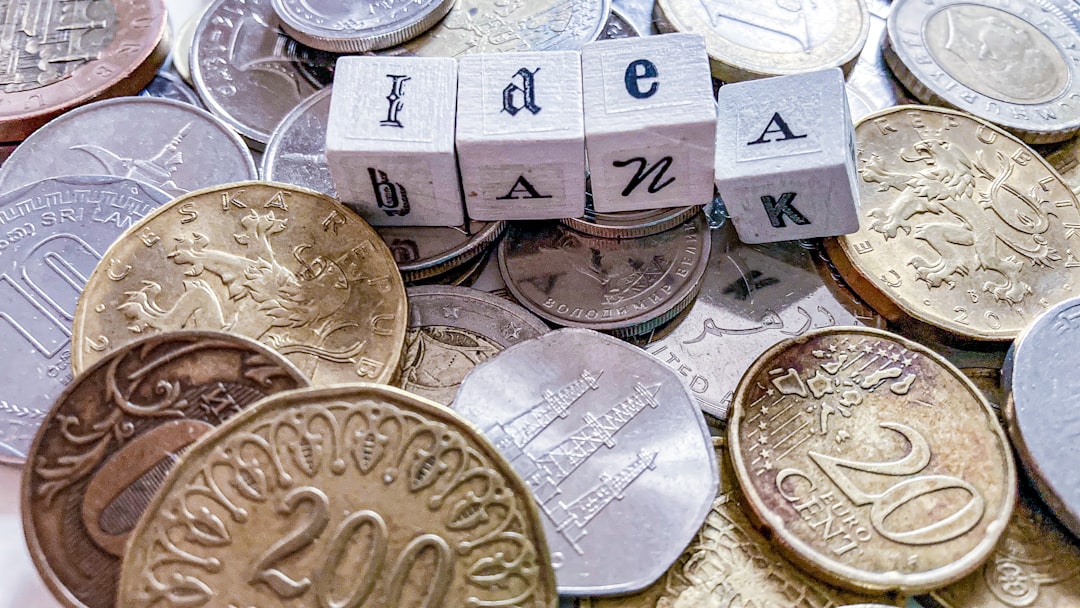We've all been there: reading mountains of analysis and charts, attempting to make sense of the seemingly complex world of trading. If you're feeling overwhelmed, don't worry! We're going to take a journey together, navigating this trading landscape in a simplified, beginner-friendly way.
It's essential that every trader, regardless of experience level, understands the importance of incorporating trading indicators into their strategies. Think of these indicators as tools in your trader's toolbox, each serving a unique purpose to help you make more educated and informed decisions about your trades. As a beginner, you might be wondering which indicators are most essential to grasp.
Good news! That's exactly what we're diving into in this article. We'll explore the top 5 trading indicators that every beginner should know. By the end of this piece, you'll not only have a solid understanding of these indicators, but also their purpose and how they contribute to successful strategic trading. Strap in tight; it's time to elevate your trading game to a whole new level!
Understanding Technical Indicators
Let's dig into the fascinating world of technical indicators. Sounds complicated already? Don't worry! By the time you finish reading this, you'll have a clear understanding of what a technical indicator is, its purpose, and how it can transform your trading strategies.
Definition
So, what are technical indicators? Simply put, these are mathematical computations that hinge on past and current price or volume activities of a trading instrument. They may appear like incomprehensible graphs and numbers at first glance, but they often reveal intricate trends and patterns in market activities.
Remember this: Successful trading is not just about being lucky; effective trading strategies hinge on understanding and interpreting essential data points, and that's exactly what technical indicators provide.
Purpose
Let's talk about why technical indicators are essential. Their importance lies in their ability to offer predictions or forecasts on potential future price movements of stocks. They are like magic balls that let you peek into the future of the stock market!
By using technical indicators, you can anticipate price movements and make informed trading decisions, which is a game-changer in volatile, unpredictable markets.
Now, does that mean you can stop worrying about losses and expect profits all the way? Sorry to burst your bubble, but no. While technical indicators offer great insights, they aren't fortune tellers. They are tools that aid decision making, but they aren't guarantees for success.
However, with a proper understanding of these indicators in conjunction with smart strategies and a bit of common sense, you will find that you're indeed one step closer to better trading. And where can you grasp more on this? Check out our comprehensive Guide to Better Trading.
Here's the thing: no approach can guarantee 100% success in trading. But, smart traders know that it's all about increasing your odds. And technical indicators, as you now know, play a vital role in doing just that.
So go forth and immerse yourself in the captivating world of technical indicators. Embrace the data, understand the patterns, and you are already on your way to becoming a more informed, strategic, and hopefully successful trader.
Role of Backtesting in Trading
You've spent countless hours developing a trading strategy, yet you're hesitant to put it into action. Doubts come rushing in. Will it work? Am I going to see a return on my investment? Here's where backtesting comes in – your secret weapon for trading confidence.
What is backtesting, you ask? Picture this: A simulator for trading strategies. It allows you to test the waters before diving in. With backtesting, you replicate your strategy on historical data, giving you a glimpse of how it would have performed in the past.
Considered a crucial tool for traders and investors, backtesting serves multiple purposes:
- Identifying Potential Flaws: Backtesting points out the weak spots in your strategy. It's like a mirror, reflecting the aspects you may overlook.
- Testing Effectiveness: It helps you measure just how effective your strategy would be in real-world scenarios. It's the closest you can come to predicting your strategy's success.
- Boosting Confidence: It gives assurance. When your strategy performs well in backtesting, it adds to your confidence, making you ready to take calculated risks.
Now, remember how we mentioned backtesting is simulating your strategy? Here's where it gets even more interesting.
You can carry out backtesting in several ways, including paper trading – where you track hypothetical trades on paper and watch how they would perform over time. Alternatively, you might consider automated backtesting if you're a seasoned trader with advanced strategies. This method uses software to simulate trades, saving you the manual work while ensuring accuracy.
Bear in mind that while backtesting plays a valuable role, it's not a crystal ball that guarantees future performance. It’s based on historical data, and sometimes, past performance is not necessarily indicative of future results. As with all aspects of trading, there are still risks and uncertainties involved.
But when it comes to refining strategies, spotting potential weaknesses, and building confidence, backtesting is a game-changer. It eases you into the world of trading, providing you a sound footing to make informed decisions.
So, shake off the doubts and embrace backtesting, a tool that serves as your compass, guiding you towards your trading goals. With backtesting in your toolkit, you're not just walking blindly into trades; you're striding in with confidence backed by data. And in trading, that makes all the difference.
The Importance of Volatility Indicators
Are you planning to embark on your trading journey and looking for the best trading indicators for beginners? Or perhaps you're an established trader aiming to further sharpen your strategies? Either way, understanding and integrating volatility indicators into your toolbox can make a world of difference. They help identify market volatility and potential trading opportunities, serving as valuable tools for both entry-level and seasoned traders.
Whispering Amid Loud Noise
When navigating the financial markets' hustle and bustle, volatility indicators act like whispers amid the loud noise. They help monitor the degree of variation in trading prices over a set period. By doing so, these indicators provide a clear picture of the market's emotional intensity, which in turn anticipates a potential price movement.
Think of it as a heartbeat monitor for the financial market. Just as doctors observe a heartbeat to gauge a patient's health, traders can use volatility indicators to determine the market's vitality and sentiment.
Unveiling Trading Opportunities
Volatility indicators aren't just useful for indicating the degree of price variation; they also offer glimpses into potential trading opportunities. When volatility is high, more substantial price swings happen, which traders can capitalize on. On the flip side, low volatility often signals a calm market where significant price shifts are less likely to occur.
Traders tend to use them to:
- Spot potential buy and sell signals
- Monitor and manage market risks
- Create trading strategies based on market volatility
Not One Size Fits All
Though volatility indicators can be powerful tools, they are not standalone solutions. It's essential to understand and appreciate their limitations. They should be used in conjunction with other tools and strategies to give a more comprehensive view of the market.
Ultimately, incorporating volatility indicators into your trading strategies can provide a clearer perspective on market conditions, helping you discover potential trading opportunities. Just remember, successful trading involves more than just implementing signals from indicators. It's about understanding the market's rhythm, learning from your experiences, and continuously refining your strategies. Harness the power of volatility indicators and let them guide you in capturing the market's pulse and rhythm, bringing you one step closer to achieving your trading goals.
Five Essential Trading Indicators for Beginners
Dipping your toes into the trading world is undeniably thrilling, but it can also be quite daunting for beginners. Determining when to buy or sell, interpreting market trends, and even just understanding the graphs can prove to be overwhelming tasks. Fear not, though! With the right tools and understanding, you can make the journey much smoother and more profitable.
One such tool is technical indicators. These indicators provide valuable insights about the market, helping you to make well-informed trading decisions. Here's a closer look at five essential trading indicators that every beginner should familiarize themselves with:
Moving Averages
Moving averages are at the very heart of technical analysis. Simply put, a moving average is an average of a specific number of data points from previous trading periods. Moving averages help traders to identify trends by smoothing out price fluctuations.
- Simple Moving Average (SMA): This is calculated by taking the average of all the prices over a certain period.
- Exponential Moving Average (EMA): Unlike the SMA, the EMA gives more weight to the recent prices.
RSI (Relative Strength Index)
The Relative Strength Index (RSI) is a momentum oscillator that measures the speed and change of price movements. It helps traders identify overbought and oversold market conditions. Generally, an RSI reading above 70 indicates overbought conditions, while a reading below 30 signifies oversold conditions.
MACD (Moving Average Convergence Divergence)
A unique blend of trend and momentum indicators, MACD helps traders identify potential buy and sell points. It consists of two lines:
- MACD line: The difference between two EMA's (usually 12-period and 26-period EMA)
- Signal line: The 9-period EMA of the MACD line
Bollinger Bands
Bollinger Bands are a volatility indicator consisting of a simple moving average (middle band) and two standard deviation lines (upper and lower bands). When the market is quiet, the bands contract, and when the market is loud, the bands widen.
Stochastic Oscillator
This momentum indicator compares a particular closing price to a range of its prices over a certain period of time. Like the RSI, the stochastic oscillator is also handy in identifying overbought and oversold conditions.
Remember, while these indicators are beneficial, they are tools, not profit guarantees. It's often a good idea to use a combination of different technical indicators and to understand the market conditions thoroughly. Moreover, always remember to practice risk management because trading, after all, carries significant risk. As a thoughtful trader, you should ensure that your gains outpace your losses over time - not merely focus on winning every trade.
Utility of Technical Analysis in Trading
Stepping into the vast world of trading can be as intimidating as it is exhilarating. Yet, with the right knowledge and tools, you can demystify this often complex domain and potentially navigate towards handsome returns. One such indispensable tool at your disposal is the method of technical analysis.
Technical analysis, as the name suggests, is a systematic approach used by traders to forecast the future price of securities. It uses various sets of data and indicators, such as price and volume, to identify patterns and trends in the market. So why, you may ask, is technical analysis crucial in your trading journey?
- Historical Patterns Matter: Technical analysis and technical indicators rely on historical data to predict future prices. It operates on the premise that the market tends to move in discernible patterns and what has happened before is likely to occur again. This data-driven methodology empowers you to make informed trading decisions, bolstering your trading strategy.
- Time-Efficient: With countless securities to choose from, analyzing each one can be a daunting task. Technical analysis, with its array of charts and indicators, provides a visually intuitive way to comprehend the behavior of any security, facilitating quicker and more efficient trading decisions.
- Manage Risk: Part of successful trading involves managing risk wisely. With the help of technical analysis, you can identify critical price levels, including 'stop loss' and 'profit target' points, enabling you to limit potential losses and optimize gains.
Given the rate at which financial markets are evolving, the role of technology, particularly Artificial Intelligence (AI), has become paramount. That's where harnessing the power of AI for Data Analysis could give you an added edge. By leveraging AI, traders can process vast amounts of historical and real-time data far more efficiently, refining technical indicators and enhancing their predictive capabilities.
As you delve deeper into the world of trading, the significance of technical analysis will become even more apparent. Like most things, mastery takes time and practice. Remember, equip yourself with the right tools, learn continuously and approach each trade with clarity and confidence. Here's to your trading success!
Conclusion
Embarking on your trading journey might seem daunting at first. However, the use of robust indicators can simplify market analysis, build your trading confidence and help you make well-informed decisions. Remember, the key to becoming a successful trader is not about mastering all indicators, but about finding the few that work well for your trading style and refining your skills with them.
To get started, consider using these five essential trading indicators we've discussed. As you delve deeper into trading, you'll discover other tools and techniques that suit your unique approach to the markets. Patience and persistence are unquestionably vital, and so is the technology you employ. Having the right tools at your disposal can make all the difference.
In this digital age, we at Lune Trading believe that integrating technology with trading education is the way forward. Our flagship products, Lune Indicator Suite and Lune AI Signals, might be just what you need. These innovative tools provide you with real-time market analysis and AI-powered trading signals, empowering you to trade with confidence.
As you continue on your trading journey, ensure you equip yourself with the best tools. Embrace technology, educate yourself, and remember - every successful trader was once a beginner. Happy trading!
Frequently Asked Questions
- What are the top 5 essential trading indicators for beginner traders?
The top 5 essential trading indicators for beginner traders are: 1. Moving Average (MA), 2. Relative Strength Index (RSI), 3. Bollinger Bands, 4. Stochastic Oscillator, and 5. MACD (Moving Average Convergence Divergence).
- How do moving averages help in trading?
Moving averages help in trading by smoothing out price data and providing a trend-following indicator. They help identify changing trends, support and resistance levels, and potential entry and exit points for trades.
- What is the significance of the RSI indicator in trading?
The RSI indicator helps traders identify overbought and oversold conditions of an asset. It provides a momentum-based indicator, allowing traders to gauge the strength and potential reversal points in a trend.
- How can Bollinger Bands be used in trading?
Bollinger Bands are used to measure volatility and identify potential price reversals. When the price touches the upper band, it may indicate an overbought condition, while touching the lower band may suggest an oversold condition.
- What does the MACD indicator indicate in trading?
The MACD indicator helps traders identify potential trend reversals, bullish or bearish market conditions, and provides signals for buying or selling assets. It combines moving averages with a histogram to display changes in momentum.










